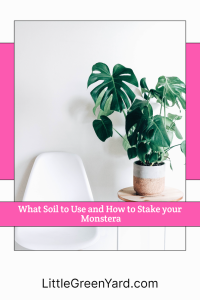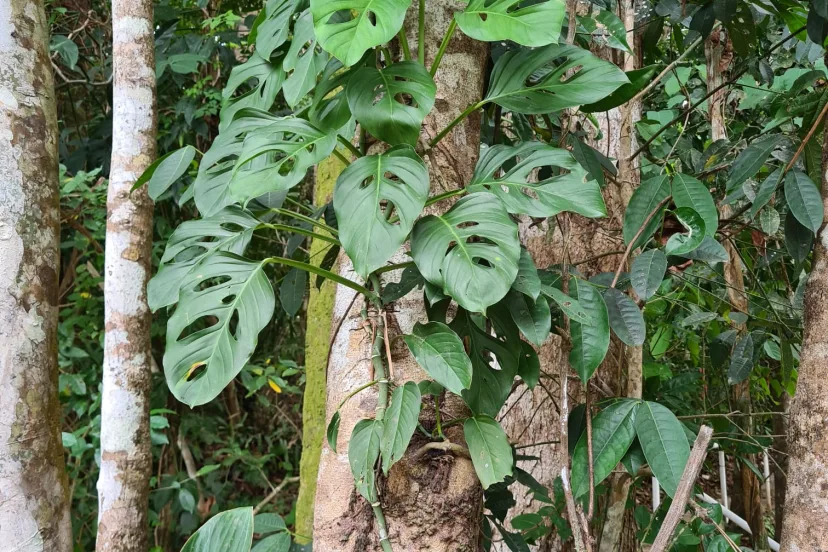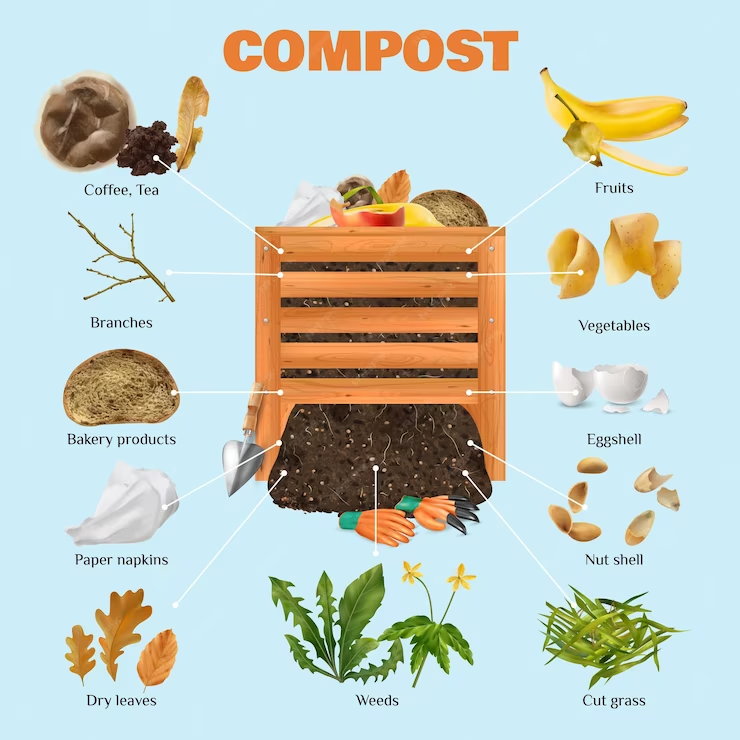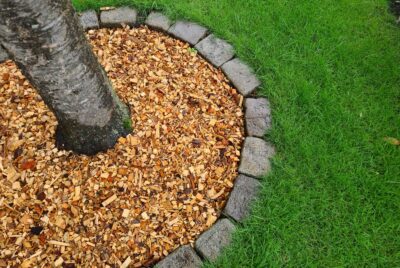What Soil to Use and How to Stake your Monstera
Hey there, fellow plant enthusiasts! If you’re as obsessed with Monstera plants, you probably already know that these leafy companions demand some serious TLC. Today, let’s dive into the heart of Monstera care – the scoop on the soil mix that’ll make your plant thrive and the art of staking it just right. Grab your watering can, because we’re about to embark on a green adventure!
So, you’ve welcomed a Monstera into your home, and now you’re on a quest to discover the ideal soil mix. You want those iconic split leaves to flourish, right? Well, you’re in the right place! Let’s chat about what soil mixes can help to keep your plants happy and healthy.
Crafting the Perfect Soil Mix
Creating the perfect soil mix for your Monstera plants is like crafting a tailored suit – it needs to fit just right for them to thrive. The reason is because Monstera plants are more susceptible to root rot – so you’ll need a soil mix that supports the growth of the roots. Here’s a simple yet effective recipe for a Monstera-friendly soil mix:
Ingredients:
- 20% Potting Soil:
- Choose a high-quality, well-draining potting soil as the base. This provides essential nutrients and aeration for your Monstera’s roots.
- 35% Orchid Bark:
- Incorporate 30% orchid bark to enhance drainage. Monstera plants, native to the rainforest, appreciate a soil mix that mimics the loose, well-draining conditions of their natural habitat.
- 35% Perlite:
- Add perlite for increased aeration and to prevent the soil from compacting. This lightweight volcanic glass promotes a healthy root environment by preventing waterlogged conditions.
- 10% Horticultural charcoal
- Usually used as the bottom layer of the pot. This wicks moisture away from the roots of the plants and avoid root rot. However, my personal preference is to mix it evenly in the soil mix, it’ll ensure that moisture is spread more evenly throughout the pot.
- 1 Handful of Earthworm castings
- This is excellent, top-grade natural fertilizer to add to your soil mix!
Mixing Ratio:
Combine these ingredients in the following ratio for a well-balanced Monstera soil mix. There are many plant parents who have different soil recipes, but the one above is what I have been using.
- 20% Potting Soil
- 35% part Orchid Bark
- 35% part Perlite
- 10% Horticultural Charcoal
- 1 handful of earthworm castings
Instructions:
- Prepare Your Container:
- Ensure your pot or container has drainage holes to prevent water from accumulating at the bottom.
- Combine Ingredients:
- In a large container or wheelbarrow, mix the potting soil, orchid bark, and perlite thoroughly. Break up any clumps for an even blend.
- Adjust Consistency:
- Depending on your specific environmental conditions, you might need to tweak the mix. If you find the soil is retaining too much water, add more perlite for improved drainage.
- Transplant or Repot:
- If you’re repotting an existing Monstera, gently remove it from its current pot, shake off excess soil, and place it into the new mix. If you’re planting a new Monstera, ensure it is positioned at the same depth as it was in its previous container.
- Watering:
- After repotting, give your Monstera a thorough watering. Allow excess water to drain out to help settle the soil around the roots.
Maintenance Tips:
- Regular Monitoring:
- Keep an eye on your Monstera and the moisture level of the soil. Adjust your watering frequency based on the specific needs of your plant and the environmental conditions.
- Fertilization:
- Feed your Monstera with a balanced liquid fertilizer during the growing season to ensure it receives the necessary nutrients for healthy development.
By providing your Monstera with a well-draining and nutrient-rich soil mix, you’re laying the foundation for a happy and thriving plant. Experiment, observe, and enjoy the lush, vibrant growth of your Monstera in its new, tailor-made soil!
I found this really good YouTube video on the common myths for caring (or killing) Monstera. And you won’t believe that overwatering is the exact cause of death for your plants!
Climbing to New Heights – Staking 101
Staking your Monstera plants is like giving them a helping hand to reach new heights. While Monstera plants are natural climbers in the wild, staking them indoors serves several practical and aesthetic purposes.
- Support for Vertical Growth:
- Monstera plants have a natural tendency to climb and vine. Staking provides structural support, allowing your Monstera to grow vertically. This not only enhances the plant’s aesthetic appeal but also maximizes its use of vertical space.
- Prevents Leggy Growth:
- Without proper support, Monstera stems can become leggy and may struggle to support the weight of their own foliage. Staking helps prevent this leggy growth, promoting a more compact and robust plant structure.
- Encourages Larger Leaves:
- When Monstera plants climb, they produce larger leaves with more fenestrations (split patterns). Staking mimics their natural climbing environment, encouraging the development of these iconic split leaves that Monstera enthusiasts adore.
- Space Optimization:
- For those with limited floor space, staking allows you to utilize vertical space effectively. This is particularly beneficial in smaller living areas where plants might otherwise take up valuable floor real estate.
- Healthier Air Circulation:
- Proper staking can improve air circulation around the plant, reducing the risk of fungal diseases and promoting overall plant health. Good air circulation is crucial for preventing issues like mold and mildew on the leaves.
Remember, while staking is beneficial, it’s essential to choose the right type of support and monitor your Monstera’s growth regularly. Whether you opt for store-bought stakes or get creative with DIY solutions, providing the right support helps ensure your Monstera thrives, producing healthy, vibrant foliage that’s sure to be the envy of any indoor jungle.
How to Stake a Monstera?
Of course there are readily available moss poles sold at garden stores and these are designed specifically for climbing plants. They provide a perfect texture that encourages aerial roots to cling and mimics the plants’ naturally environment. Nonetheless, you can also craft your own stakes with materials that are easy to find.
Materials Needed:
- Stakes:
- Choose sturdy stakes that can support the weight of your Monstera as it grows. Common options include bamboo poles, moss poles, or wooden stakes. These can be found at garden centers or online.
- Twine or Soft Ties:
- You’ll need something gentle to attach your Monstera to the stake without causing damage. Soft garden twine or plant-friendly ties work well for this purpose.
- Pruning Shears:
- Keep a pair of pruning shears handy for trimming any excess growth or adjusting ties as your Monstera climbs.
Steps to Stake Your Monstera:
- Choose the Right Time:
- Optimal staking time is during the growing season, typically spring or early summer. This allows the plant to recover quickly and adapt to the new support.
- Select the Stakes:
- Determine the number and type of stakes based on the size and growth pattern of your Monstera. For larger plants, you may need multiple stakes.
- Position the Stakes:
- Place the stakes around the outer edges of the pot, ensuring they are stable and won’t easily tip over. Position them close to the plant but not too close to avoid damaging the roots.
- Attach the Monstera:
- Gently guide the Monstera vines towards the stakes. Use twine or soft ties to loosely secure the stems to the stakes. Avoid tying too tightly to allow for natural growth.
- Secure as It Grows:
- As your Monstera continues to grow, regularly check the ties and adjust them accordingly. Make sure the plant is adequately supported without restricting its natural movement.
- Prune Excess Growth:
- If your Monstera starts sending out stems that aren’t reaching the stakes, consider pruning them. This encourages the plant to focus its energy on the supported growth.
- Monitor and Adjust:
- Keep a close eye on your Monstera’s growth and adjust the stakes and ties as needed. Staking is an ongoing process to accommodate the plant’s climbing habits.
FAQs
- Can I use regular potting soil for my Monstera?
- While regular potting soil can work, the ideal mix includes potting soil, orchid bark, and perlite for optimal growth.
- How often should I water my Monstera?
- Water when the top inch of soil is dry, adjusting based on factors like humidity and sunlight.
- Do I need to fertilize my Monstera?
- Yes, sparingly. Use a balanced liquid fertilizer during the growing season and cut back in the winter.
- Can I use any type of stake for my Monstera?
- Choose sturdy stakes like bamboo or store-bought options designed for climbing plants.
- How can I prevent pests on my Monstera?
- Regularly inspect your plant, wipe down leaves, and consider natural pest control like neem oil or insecticidal soap. Avoid overwatering to deter pests.





